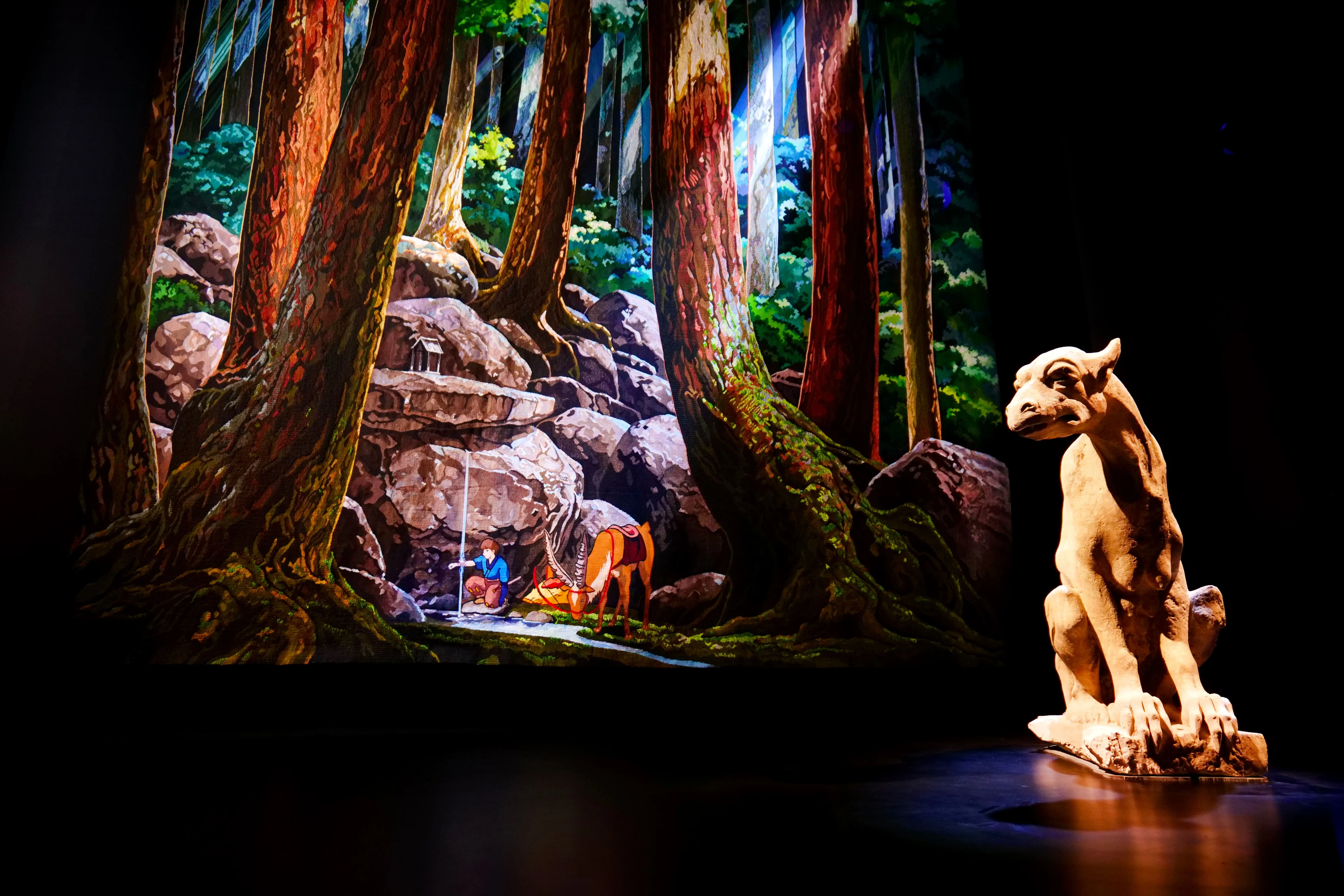Chimera and Yakul
“Ashitaka Relieves His Demonic Wound” is the first of six tapestries in the series “The Imaginary World of Hayao Miyazaki in Aubusson Tapestry,” born from a partnership between the Cité internationale de la tapisserie d’Aubusson and Studio Ghibli. This monumental woolen artwork is entirely handcrafted using the ancestral techniques of Aubusson. It captures a still image from the film Princess Mononoke, symbolizing the resilience of the ancient forest and its wildlife, threatened by human activity.
The result of eleven months of meticulous weaving, this tapestry impresses with the finesse of its details and the depth of its composition. In a majestic forest bathed in rays of light, Ashitaka tends to his wound, accompanied by his loyal steed, Yakul. The massive tree trunks, the moss-covered rocks, and the interplay of light convey the power and serenity of nature, a central theme in Miyazaki’s work.
A meeting point between a centuries-old tradition, recognized by UNESCO, and the world of animated cinema, this tapestry offers a window into a realm where humanity and nature strive for a delicate balance.

This chimera once adorned the southern gable of Notre-Dame Cathedral in Paris. Designed by Viollet-le-Duc and sculpted by an anonymous artist, it is part of the grand fantastical bestiary envisioned by the architect during the cathedral’s restoration in the mid-19th century. Inspired by both ancient and medieval mythology, these allegorical figures—chimeras, stryges, basilisks, and cerberi—reflect the era’s fascination with an idealized and symbolic Middle Ages.
This particular chimera was installed between 1860 and 1861, during the complete reconstruction of the southern gable. Severely damaged in the 2019 fire, it was removed in 2023 when architects decided to rebuild the weakened gable once again. Before being replaced by an exact replica, it served as a reference for sculptors after being reinforced with plaster.